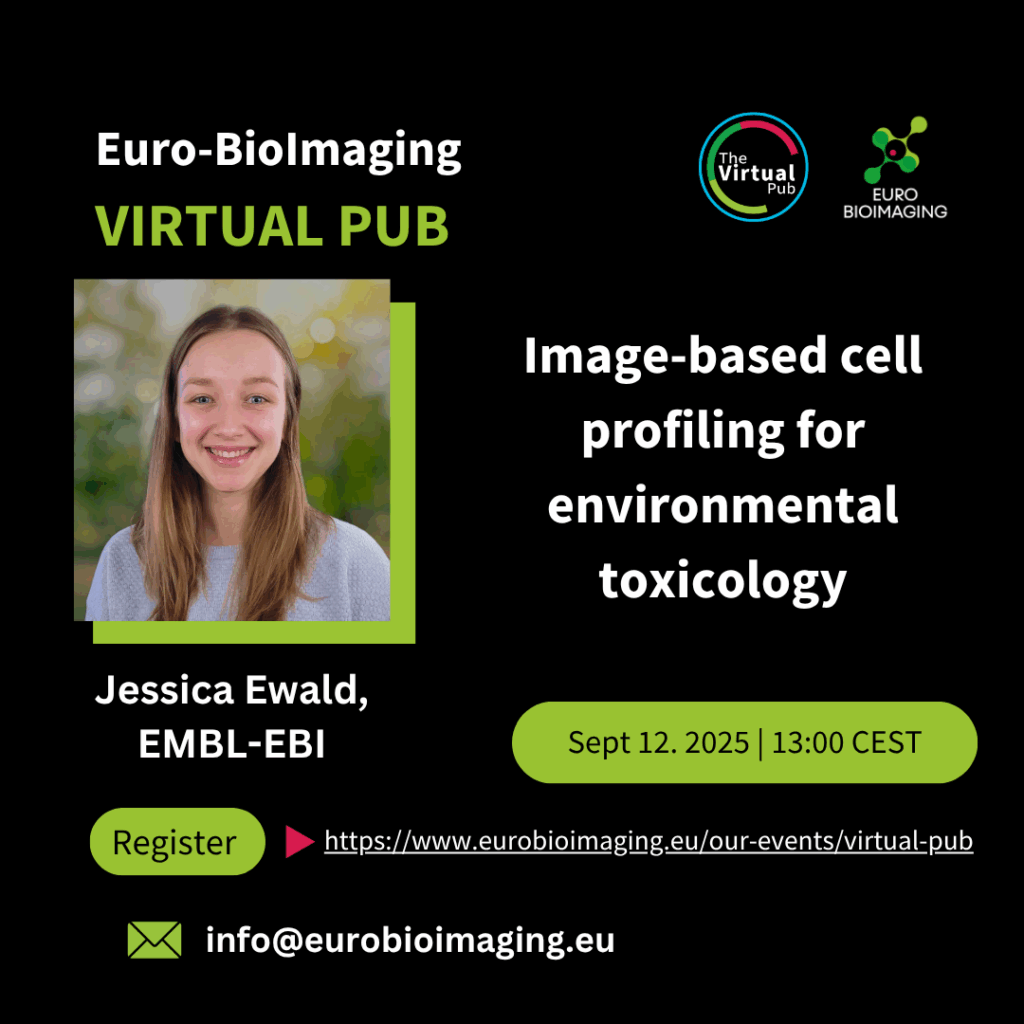Image-based cell profiling for environmental toxicology
Please join us for the Virtual Pub on Friday, September 12th at 13:00 CEST. We welcome Jessica Ewald, EMBL-EBI, on “Image-based cell profiling for environmental toxicology”. See the abstract for the talk below.
All are welcome!

Abstract: Chemical exposure is a major threat to both human and environmental health, yet the majority of chemicals in commercial use worldwide have not been assessed for their potential to cause harm to humans or ecosystems. Traditional animal-based toxicity tests are expensive, slow, and ethically problematic, and they often fail to predict human outcomes accurately. To address this gap, toxicologists are shifting toward new approach methodologies (NAMs) that use high-throughput, human-relevant cell models to evaluate chemical hazards. Among these approaches, Cell Painting, a high-throughput image-based assay that captures detailed morphological features of cells, has emerged as a powerful tool to quantify cellular responses to chemical exposure. In this talk, I will describe our work within the OASIS consortium, a cross-sector collaboration aiming to evaluate Cell Painting as part of a broader multi-omics pipeline for chemical safety testing. We are profiling ~1,500 liver-relevant compounds, including pharmaceuticals, agrochemicals, and industrial chemicals, using Cell Painting, transcriptomics, and proteomics in human and rat liver cell models such as U2OS, HepG2, HepaRG, primary hepatocytes, and liver organoids. These data are being linked to in vivo liver toxicity outcomes in rats and humans, enabling us to benchmark and refine in vitro models for hazard prediction. Preliminary findings show that image-based profiles not only detect subtle cytotoxicity nuances but also encode rich mode-of-action information. By integrating imaging with other omics data, we aim to build predictive models of chemical hazard that are scalable, human-relevant, and free of animal testing.